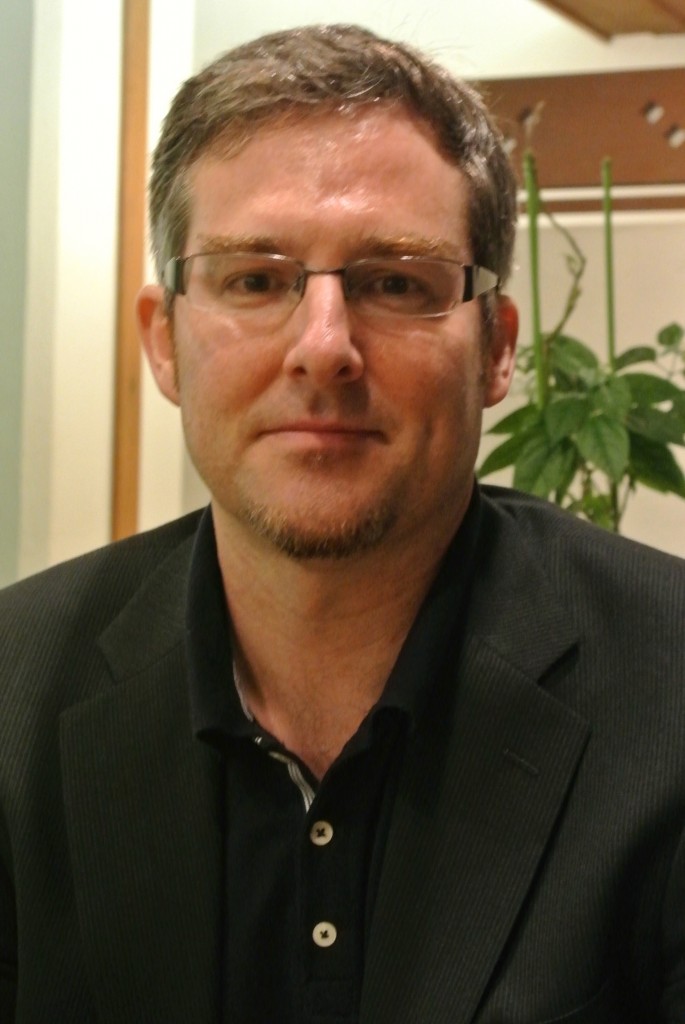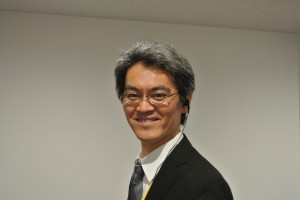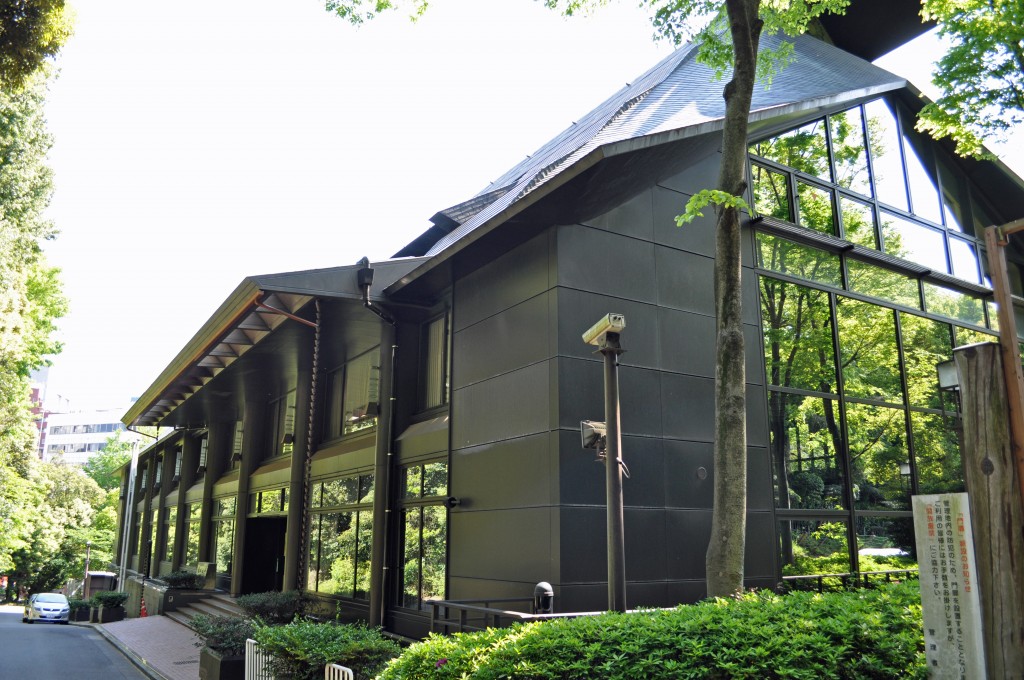
Chris Cooling, who has been working as Communications Assistant in the International Dept of Jinja Honcho since 2010
Green Shinto is delighted to carry the following exclusive interview with Chris Cooling, who works part-time as Communications Assistant in the International Section of Jinja Honcho (National Association of Shrines).
Chris was born in the steel town of Hamilton, Ontario but raised on Vancouver Island in the harbour town of Nanaimo B.C. He first came to Japan for a couple of months on summer vacation from Canada in the late 1980’s with a guitar and a tent, and has been intrigued ever since. Graduating from university in Montreal, he returned to Nanaimo to work in carpentry and landscaping before coming back to Japan in 1997. Apart from his work at Jinja Honcho, he runs a small independent travel company and plays music.
***********************************
1) How and when did you get the job, and have there been any foreigners attached to Jinja Honcho before?
I had an acquaintance from Kyushu who ended up working at Jinja Honcho in the International Section. We had visited shrines together and enjoyed discussing Shinto and religious topics in general. Our talks, my interest in Shinto and perhaps my Japanese ability led her to suggest me as a candidate when the position became available. Interestingly, I was not asked about my own religious background at the interview but would have truthfully answered that I feel a closer affinity to the First Nation beliefs on the West Coast of Canada than any Christian denomination. That interview was back in July 2010. I do believe there were foreigners working in the International Section before myself but I have never met them.
2) Most Green Shinto readers will have heard of Jinja Honcho without knowing exactly what it is or does. Could you give a brief description.
Jinja Honcho has roughly 76 employees, comprising 9 departments, a newspaper wing and an architectural office that provides services for shrine-related architecture. It was founded in 1946 as an umbrella organization to administer the some 80,000 shrines (current figure) in Japan following the Shinto Directive in December 1945 that separated religion and state. It promotes educational activities for worshipers, the training of Shinto priests and also focuses on preserving the rituals, festivals and cultural traditions of Shrine Shinto. It maintains a close relationship and reverence for the Grand Shrine of Ise in Mie Prefecture.

Iwahashi Katsuji, chief of the International Department at Jinja Honcho with whom Chris works
3) What exactly is the International Department, and what are its main activities?
We presently have 4 staff including myself. The International Department’s main activities involve the publication of Shinto related materials in English and seminars for diplomats and other religious groups to better inform them of Shinto activities. There are also overseas trips to interfaith conferences and an increasingly important role as the link for international dialogue as Shinto is receiving more and more interest from around the world. This past year a lot of time was spent organizing the Traditions for the Future event, a historical gathering of religious leaders in Ise that included the United Nations. The International Section staff also take part in the ceremonies and rituals here at Jinja Honcho.
4) How about your own duties? What kind of things have you been doing?
My own duties are quite varied. I do a lot of proofreading and some translation. I have also accompanied the President of Jinja Honcho overseas on a conference trip and participated in a number of diplomatic seminars. The job is also project based and I have been involved in developing the English website, publishing the very successful Soul of Japan booklet; as well as working with foreign press as a communications director for last year’s Shikinen Sengu (renewal ceremony) and this year’s Traditions for the Future symposium in Ise.
5) What is the most exciting or challenging thing you’ve had to do?
Well, that’s a difficult one but I guess one of the most exciting things was having the opportunity to witness the sacred rituals at Ise Jingu during the Shikinen Sengu in 2013. That was an experience I will cherish all my life.
In terms of the most challenging, I think my colleagues would agree that disseminating Shinto tradition in a respectful and understandable way to the international community continues to be a challenge and one which we continually strive to improve.
6) What would you say are the main concerns of Jinja Honcho at the moment?
From the perspective of Jinja Honcho I don’t feel there are many major concerns except to maintain the smooth administration that has preceded it. Regarding the International Section and indirectly the greater role of Shinto, I think it is important for Jinja Honcho to keep an open mind towards the interfaith dialogue as well as the debate on environmental issues. Sharing the traditions, wisdom and practices of Shinto with the international community through art exhibitions, conferences, publications and even festivals has a positive and important role to play in introducing this ancient faith to the world.
********************************************************
For the English-language website of Jinja Honcho on which Chris has been working, please click on the following link: http://www.jinjahoncho.or.jp/en/. For the Soul of Japan English-language booklet, click here.

The Jinja Honcho building next to Meiji Shrine in Tokyo, headquarters of the National Association of Shrines which includes nearly 80,000 shrines (photo by Chris Cooling)

It’s a interesting article saying about shrines.
I was always been interested and I would like to learn more about shrines and events as well.